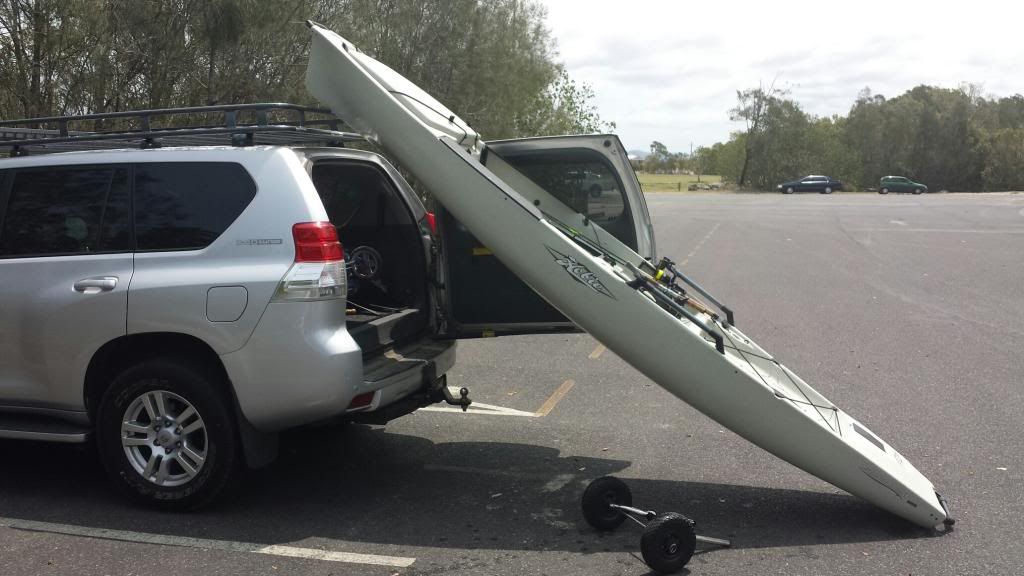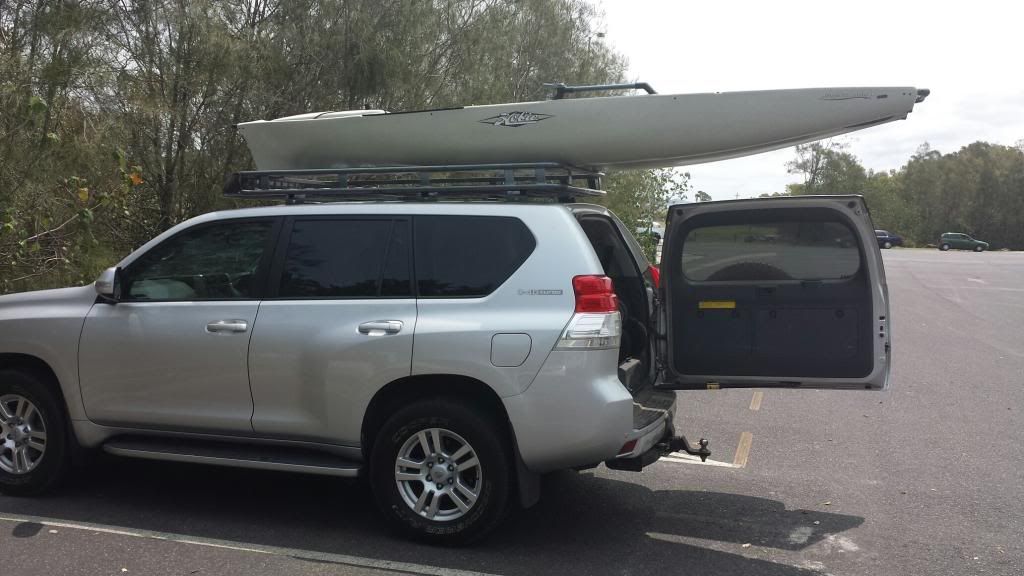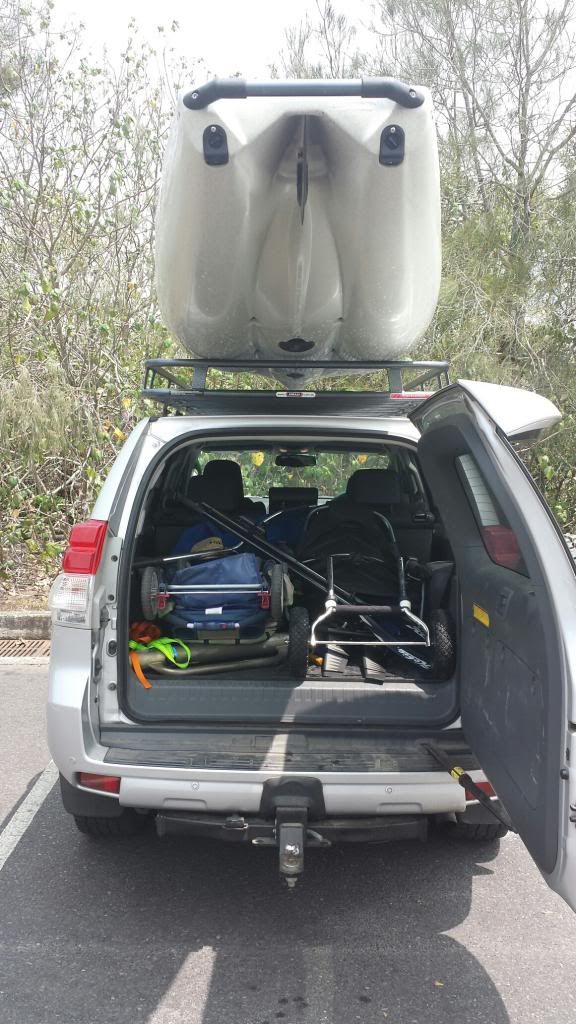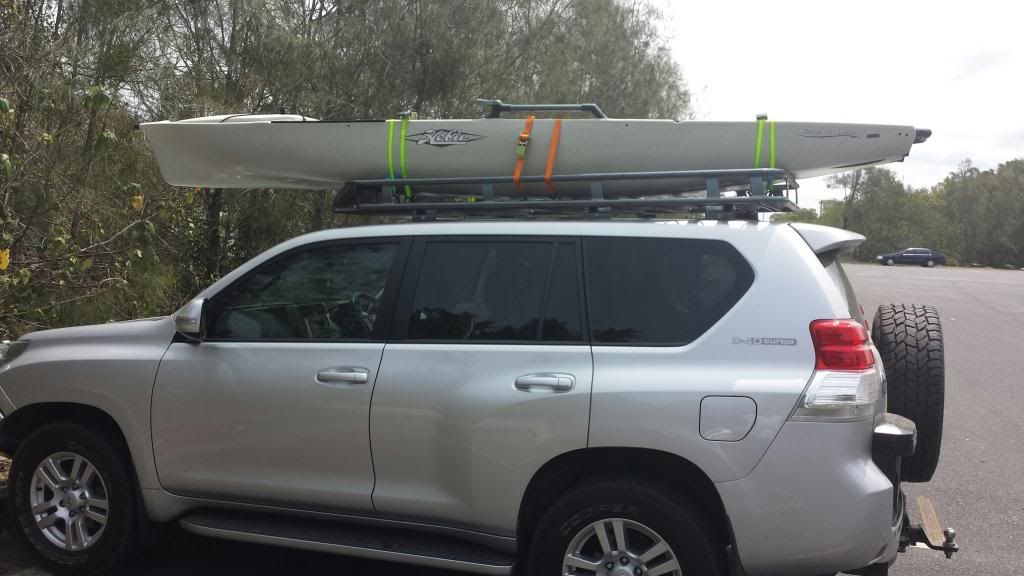Here's what i've previously posted on how i load my Hobie Pro Angler 14.
I've got a 2010 Toyota Prado 150VX with a Tracklander 4WD roof rack. The height from ground to the back of the roof rack is about 2.1 metres. There are a number of videos on YouTube that show different devices that have been constructed to assist with loading a kayak onto the roof of a vehicle. I don't use anything. I've taken a number of pictures that show how i go about loading it onto the roof rack. Though i expect most of you will read this and think i'm trying to teach you to suck eggs, that's because I've written it as though i'm trying to explain it to someone who's got no experience in any of this.
I start by opening the rear door. On the Prado, the gas strut can be locked so it won't swing closed. I put the front of the PA onto the bumper and unload everything into the back of the car. The only things i leave in are the rods, in-hull plano boxes, and whatever is in the front storage bin. I dont' usually insert the locking pin in the top of the cart after i recover from the water, but unlocking that is something that could be done now. It's not a big deal. It just means the cart will fall away from the hull when it gets lifted high enough. Maybe not a good idea on a slope. If you don't unlock it, you can always do it after you've lifted the yak high enough for the wheels to leave the ground. It might be more difficult for those with shorter arms, but i don't have that problem.

Next step is to lift the bow up and place it on the rear of the roof rack. To do this i use the bow handle to manoeuvre the kayak so the rear skids are directly behind the middle of the car. They will act as the pivot point. The bow is positioned to the left side of the car near the rear wheel. You don't have to lift the bow very high before the skids touch the ground and provide some resistance. Ordinarily i'd squat and put the bow on my shoulder, then stand up. Today i had a busted knee so i had to do a two-hand lift to get it high enough to transition so my hands are under the bow. This is the point where the cart should fall away from the hull. Now the skids keep it from going anywhere and i can walk my hands down the hull so that the bow is high enough to clear the roof rack, then i simply step sideways behind the car and lower so that the bow is resting on the roof rack. If you hadn't removed the cart, this can be done now.


Now the yak is nicely lined up, and you can see the stern handle is clear of the ground with enough room to get your hands underneath. With both hands i lift to chest height and push forward. A good shove and a step forward are all that's needed to get enough momentum for it to slide far enough forward so that the bow sits on the front of the roof rack.
Making sure the hull is centred along the roof rack, just push it forward until you're happy with the position. For my roof rack, the sweet spot is where the mirage drive gap sits over the front bar of the roof rack. This keeps it from easily sliding forward. Just be mindful that when the hull is wet it slides easily, including sideways.


When you're happy, just use your ratchet straps to secure the kayak to the roof rack/car. I initially used a strap to tie the bow handle to the bull bar, and a strap to tie the rear strap to the tow bar. This worked well in keeping the bow and stern from shifting from side to side. Unfortunately the handles simply aren't built for these stresses and, though it didn't happen to me, it may result in damage to the handle and/or hull. Now i use the extra straps to wrap around the hull, locking away any lateral shift.

Mike